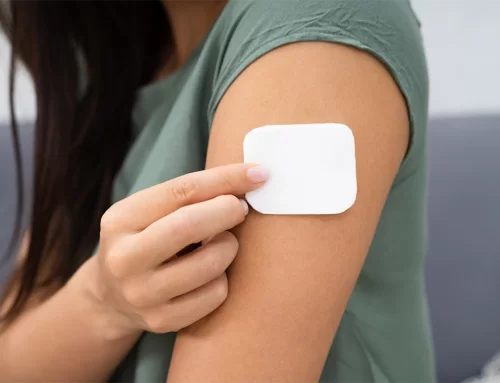Ever searched “CBT therapist near me” and felt unsure where to start? When anxiety, addiction, or constant negative thoughts take over, reaching out for help can feel overwhelming. Cognitive Behavioral Therapy (CBT) offers a clear, practical path forward.
If you’re ready to take that step, Taste Recovery makes it easier. It connects you with licensed CBT therapists and treatment centers nearby, so you can find the right support and start feeling more in control of your recovery and well-being.
What Is Cognitive Behavioral Therapy (CBT)?
CBT is a type of talk therapy that helps people understand how their thoughts, feelings, and actions are connected. The idea is simple: what you think affects how you feel, and how you feel affects what you do.
CBT helps you notice negative or unhelpful thoughts, like “I’ll never get better” or “I always fail,” and teaches you how to challenge and replace them with more balanced, realistic ones.
Unlike some therapies that focus mainly on the past, CBT is structured and goal-oriented. It focuses on the present and gives you practical tools you can use every day. These might include journaling, relaxation techniques, or problem-solving exercises that help you manage stress and respond differently to tough situations.
Because CBT is evidence-based, meaning it’s backed by research, many experts use it to treat anxiety, depression, addiction, and other challenges. It’s about learning to take charge of your mind, so your thoughts work for you, not against you.
How CBT Works for Anxiety, Depression, and Addiction Recovery
CBT teaches you to spot unhelpful thoughts, test them, and practice new actions. Over time, this lowers symptoms and relapse risk. It’s backed by many clinical trials.
Anxiety
- Face fears safely, on purpose. You learn step-by-step exercises to face what scares you, while testing the scary thoughts behind the fear. This reduces anxiety over time.
- Works as a first-choice treatment. Large reviews find CBT helps most people with anxiety disorders, with effects that last after therapy ends.1
Depression
- Change the loop of “negative thoughts, from low mood to withdrawal.” CBT uses skills like cognitive restructuring (challenging unhelpful thoughts) and behavioral activation (small, meaningful actions) to lift mood.2
- Strong evidence base. Big analyses show CBT is one of the most tested and effective talk therapies for depression; major guidelines recommend it.3
Addiction & Substance Use Recovery
- Manage triggers and cravings. CBT teaches coping plans for high-risk moments, problem-solving, and “relapse prevention” skills.
- Reduces use and supports early recovery. Meta-analyses find small-to-moderate benefits vs. inactive care, especially in the first months after treatment; effects improve when combined with medications when indicated.4
- Digital options help with access. App-based CBT with brief clinician check-ins can help adults seeking alcohol treatment.5
Why CBT works (the “how”)
- Skills, not just talk. You learn concrete tools, such as thought challenging, behavior experiments, exposure steps, and craving management, that you keep using after sessions end.
- Targets key processes. Research shows changing thoughts/behaviors changes symptoms; different CBT components each move the needle.6
What to expect
- Clear plan and goals. CBT is structured and time-limited (often 8–16 sessions), with homework to practice skills in real life. Many guidelines list CBT among the first-line choices.7
- Lasting gains. Benefits often continue after therapy, especially for anxiety.
What to Expect from a CBT Therapy Session
If you’ve never tried therapy before, it’s normal to wonder what actually happens in a session. In CBT, you and your therapist work together as a team. Each session usually follows a clear plan so you know what to expect.
The first session often involves assessment and goal-setting: you’ll talk about your current challenges, symptoms, and what you hope for, and your therapist will help you define measurable goals.
What Happens in a Session
- You’ll discuss thoughts, feelings, and behaviors. For example: “When I felt anxious, what did I think? What did I do? What was the result?”.
- You’ll learn a new skill or strategy: Perhaps a “thought record” (writing down a distressing thought and asking “Is this true? What’s a more balanced thought?”) or a “behavior experiment” (trying a different action to test how things change).
- You’ll get homework to do between sessions: Real change happens when you apply what you learn in daily life. This might include tracking moods, practicing a new behavior, or using a worksheet.
How You Can Make the Most of a Session
- Be honest and open: The more you share your thoughts, behaviors, and feelings, the more your therapist can help.
- Do the homework: Like any new skill, practice matters. Using it outside the session helps cement change.
- Talk about goals: Revisit what you want to achieve so you can see progress and stay motivated.
- Reflect: After a session, think about what made sense, what felt challenging, and what you’ll try next.
| Note: Research shows that homework compliance (doing the between-session tasks) is associated with better outcomes. While the exact paper may be more niche, the concept is well-acknowledged in CBT literature.8 |
How Taste Recovery Makes Finding CBT Therapists Simple
When you’re ready to seek help, especially for issues like anxiety, addiction, or negative thought patterns, the process of selecting the right treatment center (or therapy option) can feel overwhelming. Taste Recovery helps simplify that in a few key ways:
- One place to start. Taste Recovery brings treatment centers, therapy providers, and sober-living homes together in one easy-to-use platform.
- Filter to your needs. Narrow your search by location, type of care, budget, and focus — helping you find options that fit your recovery goals.
- See details upfront. View reviews, availability, and contact providers directly for a transparent, stress-free search.
- Support at every stage. From starting therapy to residential or outpatient care, Taste Recovery helps you choose what fits your current stage.
- Easy and empowering. Its user-friendly design removes guesswork, making your search faster and more confident.
With Taste Recovery, selecting the right treatment center or CBT therapist becomes simpler, faster, and more personal.
Sources:
-
Hofmann, S. G., Asnaani, A., Vonk, I. J. J., Sawyer, A. T., & Fang, A. (2012). The efficacy of cognitive behavioral therapy: A review of meta‐analyses. Cognitive Therapy and Research, 36(5), 427–440. Link
-
Ciharova, M., Furukawa, T. A., Efthimiou, O., Karyotaki, E., Miguel, C., Noma, H., Cipriani, A., Riper, H., & Cuijpers, P. (2021). Cognitive restructuring, behavioral activation, and CBT in treating adult depression: A network meta-analysis. Journal of Consulting and Clinical Psychology, 89(6), 563–574. Link
-
Cuijpers, P., Quero, S., Noma, H., Ciharova, M., Miguel, C., Karyotaki, E., Cipriani, A., Cristea, I. A., & Furukawa, T. A. (2021). Psychotherapies for depression: Network meta-analysis of efficacy, acceptability, and long-term outcomes. World Psychiatry, 20(2), 283–293. Link
-
Magill, M., Ray, L., Kiluk, B., Hoadley, A., Bernstein, M., Tonigan, J. S., & Carroll, K. (2019). Meta-analysis of CBT for alcohol or drug use disorders: Treatment efficacy by comparison condition. Journal of Consulting and Clinical Psychology, 87(12), 1093–1105. Link
-
Kiluk, B. D., Benitez, B., DeVito, E. E., Frankforter, T. L., LaPaglia, D. M., O’Malley, S. S., & Nich, C. (2024). Digital CBT for adults with alcohol use disorder. JAMA Network Open, 7(9), e2435205. Link
-
Norbury, A., Hauser, T. U., Fleming, S. M., Dolan, R. J., & Quentin. (2024). Different CBT components affect specific cognitive mechanisms. Science Advances, 10(13). Link
-
National Institute for Health and Care Excellence. (2022). Depression in adults: Treatment and management. Link
-
Mausbach, B. T., Moore, R., Roesch, S., Cardenas, V., & Patterson, T. L. (2010). Relationship between homework compliance and therapy outcomes: Updated meta-analysis. Cognitive Therapy and Research, 34(5), 429–438. Link







